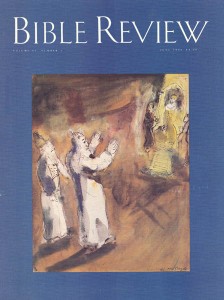A hurtling satellite peering down from Europe’s night sky during the past millennium couldn’t have missed the blazing emblems of Christendom’s sustained disapproval of the Talmud; pyre after pyre of burning books, ordered by pope after pope, in town after town—Paris, Toulouse, Perpignan, Rome, Bologna, Ferrara, Mantua, Florence, Venice, Cremona. In the last such auto-da-fé, held in 1757 in the Polish town of Kamenets-Podolski, nearly a thousand copies of the offensive book, having been dragged through the streets, were thrown into a pit and burned by the hangman.
Nor have modern attitudes, as reflected in our everyday language, been overly kind to the Talmud. When an argument is long and involved, and especially when it relies on hairsplitting distinctions, we discount it, not uncommonly, as “talmudic.”
Why such hostility toward an ancient work so venerated, and so faithfully studied even now, by the Jewish people?
Part of the answer, no doubt, lies in the Talmud’s inaccessibility. It is, without question, a hard work to understand. In 1307, one fair-minded pope, Clement V, wondering what the Talmud actually said, and finding no one who could tell him, proposed that chairs be founded in Paris, Salamanca, Bologna and Oxford in languages close to those of the Talmud so that those universities might someday produce a translation. The project, it seems, failed, and the burnings went on.
Already a library member? Log in here.
Institution user? Log in with your IP address.

